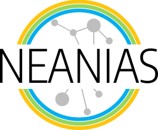Work package 5 has been created to have a sort of bridge between the novel new services developed through the frame of NEANIAS and European end-users. By novel services, we refer to the state-of-the-art technologies in space, atmosphere and underwater. As end-users, the highlight has been on small and medium-sized businesses.
Work package 5 has two main aims:
- To guide service developers through a path of creating their products and trying them out with the help of the end-users multiple times even before finalizing them
- To help end-users to a product, shaped to their needs, that is the best of its kind and is not yet on the market, therefore it could mean a potential advantage over their main competitors
Work package 5 develops frameworks and gives guidance, so that the service developed could serve both as a competitive advantage to the end-users and a unique product, that could be sold by the developers, to solve problems in a wide range of industries and use areas.
By providing a chance to small and medium-size European businesses to have access to these state-of-the-art technologies (also developed in Europe), the foundation of a new, competitive innovation ecosystem can be created and built on.
By giving guidance to researchers and service developers on how to involve the end-users in the creative process of perfecting their services, they will be empowered by a world-wide use methodology that aims to save time and money, while also enhancing the quality of their end product. This process is commonly referred to as open innovation. To summarize the vision of NEANIAS work package 5, it is to provide guidance by involving innovation managers in the process of open innovation, to help both service developers and end-users create novel services for underwater, atmosphere, and space, meanwhile enhancing the competitiveness of a new European innovation ecosystem.
This vision can be then broken down to multiple structural parts, first creating an action plan for the chosen service developers and end-users to follow. By trying out this framework, innovation managers can shape it where necessary to the participants and identify how to scale the number of collaborators without harming the actual outcome. This would lead us to the next step, where new end-users will be invited through open calls. To have a structured and customized action plan becomes crucial at this point, so that the open innovation system does not get overwhelmed and collapse under the pressure. After the open calls, selected companies will gain valuable access to the novel services, while service developers will be able to do further try-outs on the products, before starting the commercialization process.
The first six months of the NEANIAS project have been crucial for work package 5; the innovation manager, developed the frameworks and the action plan on how to proceed with tasks. These concepts, then had to be presented to the other participants in the work package. To do so, matchmaking Events were set up, urging all participants to start a discussion on collaboration and open innovation. One of the main challenges had been to make sure everyone is on the same page, both in terms of definitions and end-goals. These Matchmaking Events are periodical and currently in stage 2. We will continue with stage 3, later on this year, so that all participants can gather all major inputs agreed on previously.
Key achievements of work package 5 in the first semester have been the open innovation framework and action plan development, and the creation of the Innovation Inventory and the Business Case Assessment catalogues.
Overall, the foundation of the business case development has been laid and is already implemented in the sustainability plan of work package 9, so that in the future other service developers and end-users could use it and foster open innovation in the European innovation ecosystem.
